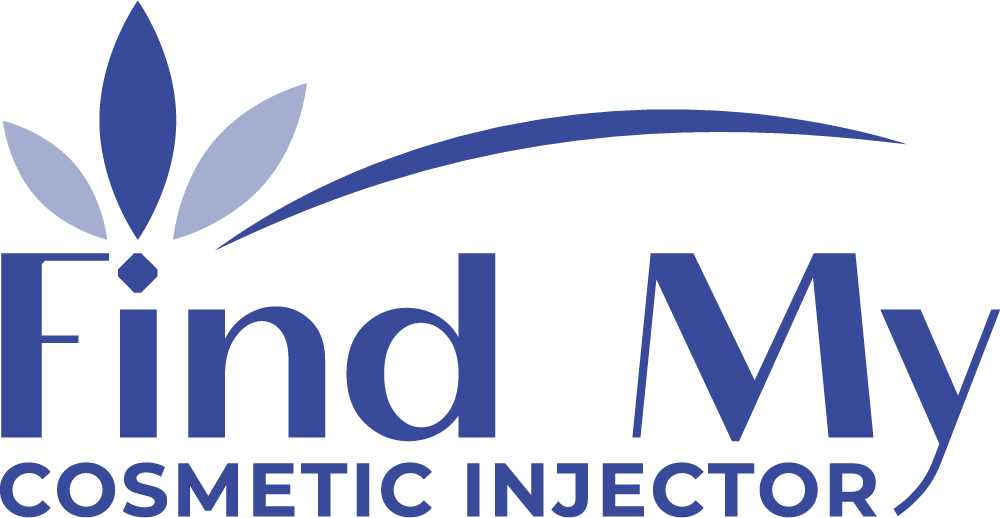
How Long for Lip Filler to Settle?
Introduction
The truth is, you can’t always tell how long lip filler will last or if it will settle. The best way to find out is to ask your injector and make sure they have a lot of experience with the product. If they’ve been doing this for a few years and are confident in their skills, then you should trust them!
Read on to learn more about fillers and how long it takes them to settle.
What is Lip Filler and What Does it Do?
Lip filler is a substance that is injected into the lips to give them a fuller appearance. It is made of hyaluronic acid, a natural substance that is found in the body. When it is injected, it helps to plump up the lips and make them look fuller and more voluptuous.
How Long Does it Take for Lip Filler to Settle?
The answer to this question really depends on the individual. Some people’s lips will settle almost immediately, while others may experience some swelling and bruising that lasts for a few days. Generally speaking, however, lip filler should start to look its best about two weeks after treatment.
Fillers Don’t Last Forever
The majority of people who get lip injections want the filler to last for a long time. However, this is not always possible. The filler can last anywhere from six months up to two years with some people even reporting that their filler lasted three years or more.
On the other hand, most lip implants will last anywhere from five to ten years. Lip injections are only semi-permanent which means they need to be maintained on a regular basis in order to maintain desired results.
In other words, if you have been considering getting lip injections, then it’s best that you do your research and find out just how long it takes for lip filler to settle after injection treatment from a professional injector so you know what you’re getting into.
Tips for Caring for Your New Pout
After getting lip injection treatment from a professional injector, it’s important to follow some simple tips to keep your pout looking its best. Here are four tips to help you out:
1. Avoid putting pressure on your lips. This means avoiding activities like sucking on a straw or puckering up for a kiss.
2. Stay hydrated. Drink plenty of water and avoid salty foods, which can cause swelling.
3. Use a good lip balm. Look for one that contains SPF to protect your lips from the sun’s harmful rays.
4. Avoid alcohol and smoking. Both of these can dry out your lips and make them look less plump and juicy.
Conclusion
If you’re considering getting lip injections, then it’s best that you do your research and find out just how long the filler lasts so that you know what to expect from this procedure. In other words, if you’re looking into starting a new beauty regimen or adding more treatments to your beauty routine, you should make sure you have all of the information you need before jumping in head first.
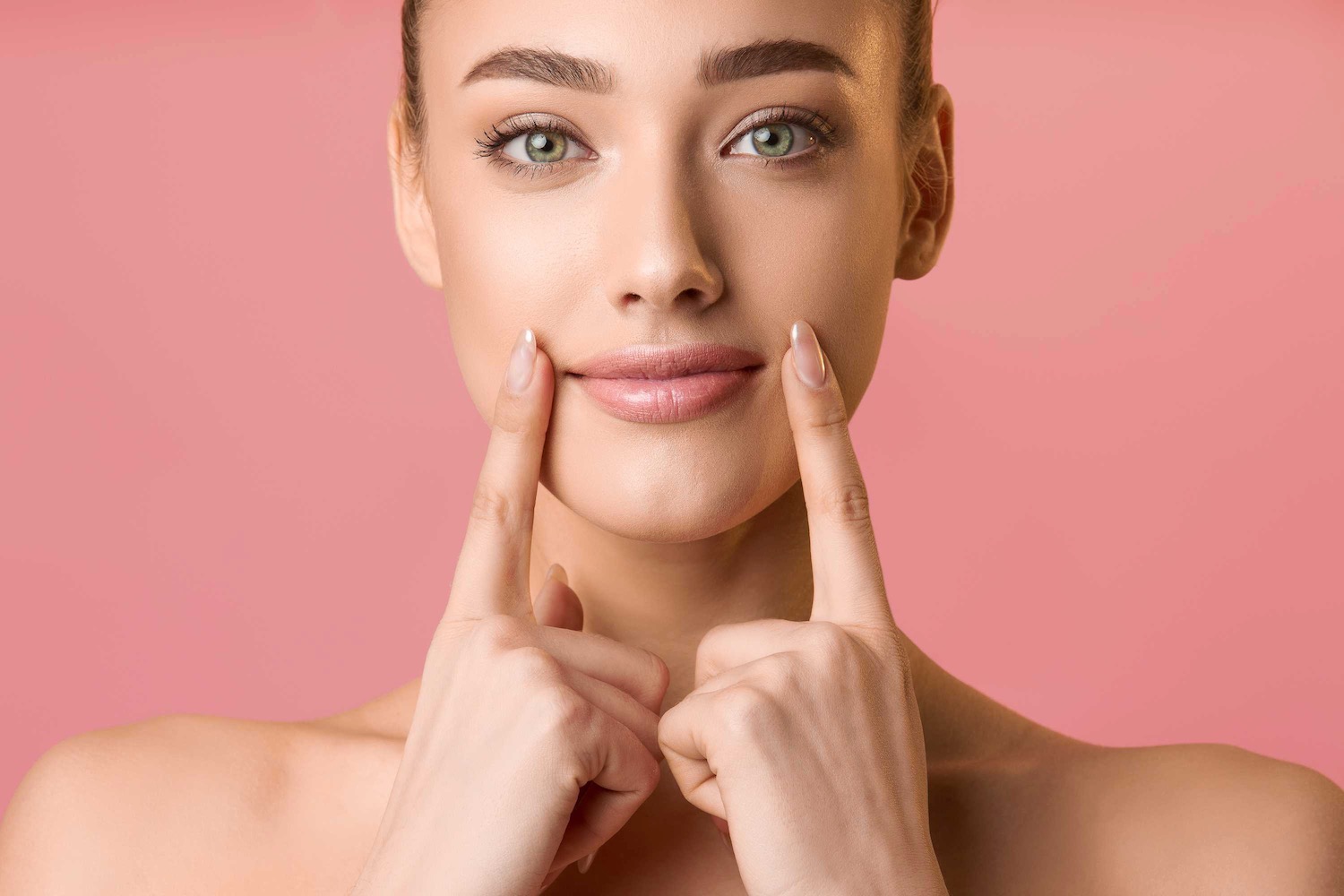
How Long Does Lip Filler Bruising Last?
Introduction
Everyone wants to have a full, luscious pout. With the help of lip injections, you can get that look without going under the knife. Lip filler bruising is a result of an injection into your lip area and it can last for days or weeks depending on how much tissue was injected into your lips.
The good news is that since there are different types of fillers available, you can find one which will give you the results desired with no side effects whatsoever. In this article we’ll talk about what causes bruising from lip filler injections and what factors influence how long it lasts as well as why certain treatments work better than others in minimizing its effects.
What is Lip Filler Bruising?
Lip filler bruising is a side effect that can range from redness to significant swelling. It is most often seen on the front of the mouth near the lip line and extends to the lips. Lip filler bruising results from the injection of blood-rich tissue underneath the skin of your lips with a needle. This process stimulates healthy tissue growth, which in turn causes the swelling.
How Long Does Lip Filler Bruising Last?
Bruising usually subsides within a few days, but can last up to two weeks.
Contributing Factors
There are several factors that can influence the duration of bruising following a lip filler treatment. These include the type of filler used, the injection technique, the patient’s age and health history, and how well they follow post-treatment instructions.
The most important factor in minimizing bruising is the type of filler used. Some fillers are more prone to causing bruising than others. In general, hyaluronic acid fillers such as Juvederm and Restylane are less likely to cause bruising than collagen fillers such as CosmoPlast and Captique.
The injection technique is also important. Injecting too much filler at one time can cause more bruising than injecting smaller amounts over a longer period of time. The doctor’s skill and experience also play a role in minimizing bruising.
Patient factors such as age and health history can also influence the duration of bruising. Younger patients tend to bruise more easily than older patients, and patients with a history of bruising are more likely to bruise after lip filler treatment.
Tips for Preventing Lip Filler Bruising
One of the best ways to prevent lip filler bruising is to avoid drinking alcohol and taking blood thinners before your treatment. Additionally, you should avoid eating greasy foods and drinking coffee in the hours leading up to your appointment. If you do experience bruising, there are a few things you can do to help minimize the appearance:
– Apply a cold compress to the area
– Take ibuprofen or aspirin to help reduce swelling
– Avoid sunlight and extreme temperatures
– Try a topical cream or gel like Arnica Montana, which can help to speed up the healing process
Conclusion
Bruising is a common side effect of lip filler injections, but with careful preparation and treatment it can be minimized. Always consult with your doctor before your treatment to find out what steps you can take to reduce your risk of bruising. If you do experience bruising, be sure to follow the tips listed above for optimal healing.
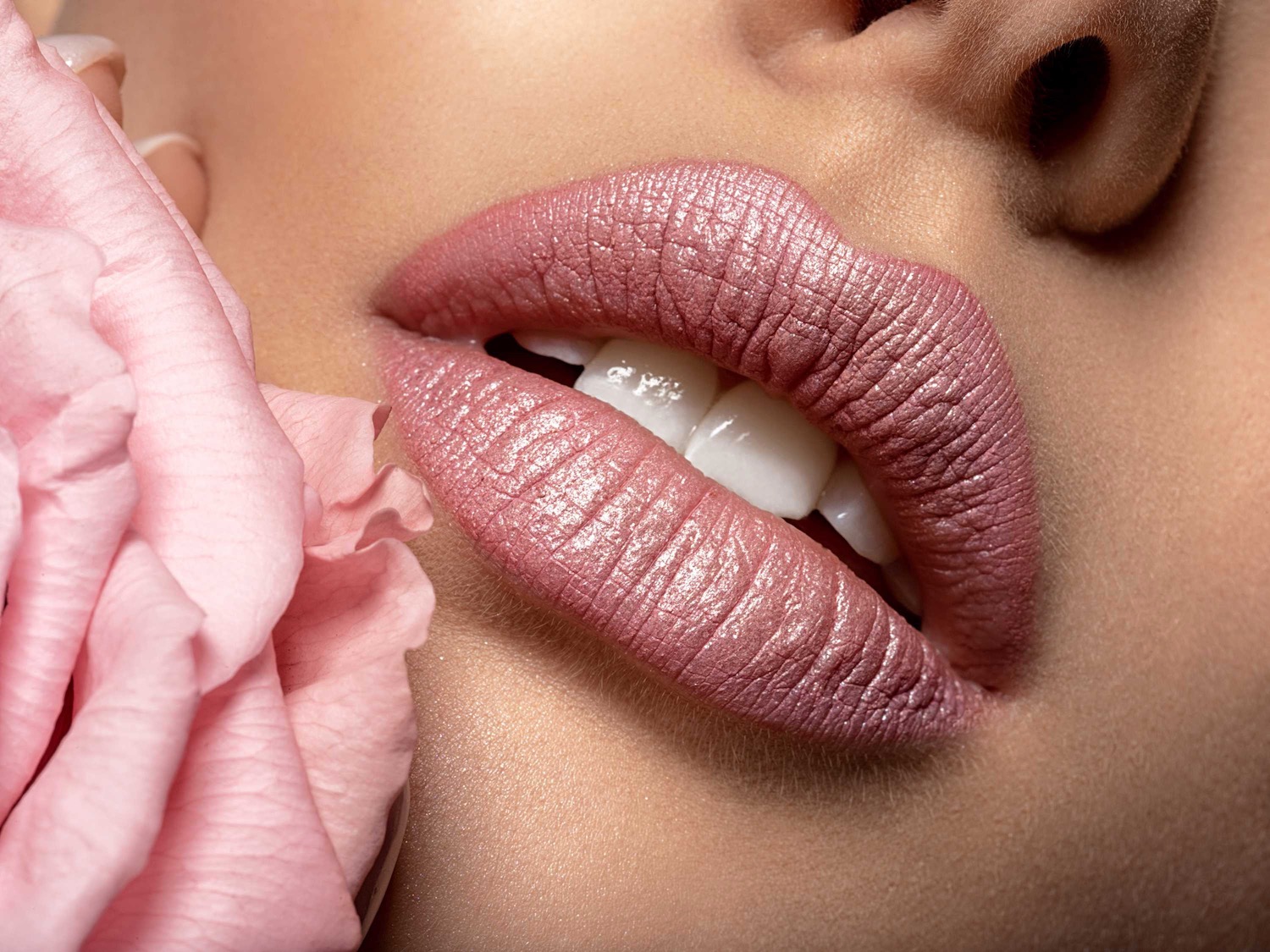
How Long Does it Take Lip Filler to Settle?
Introduction
Lip fillers have been a cosmetic staple for decades, but they’ve become even more popular since the “Kylie Jenner Lip Challenge” swept social media. With just a little bit of filler, you can create the appearance of fuller, more shapely lips. But does lip filler settle? Read on to find out!
Lip Fillers Are a Temporary Solution for Thin Lips
Lip fillers are a temporary solution for thin lips because they are made out of hyaluronic acid. They provide shape, volume, and long-lasting hydration to the lips.
Lip fillers are not permanent, but they can last up to 18 months or longer with an appropriate care routine.
Using injectable fillers such as Juvéderm®, Teosyal® or Restylane®, can promote an enhanced look. These temporary lip fillers are the best solution if you’re looking for fullness in just one specific area of your lips. You can achieve a poutier appearance by augmenting your top lip’s Cupid’s bow with lip fillers.
Caring for Your Filler
It’s important to take care of your lip filler so that it lasts as long as possible. This means avoiding certain activities, such as smoking, and following the instructions your doctor provides.
It’s also important to remember that lip fillers are a temporary solution and they will eventually settle over time. This means that you may need to refresh your filler every few months. When you’re ready for a more permanent solution, talk to your doctor about injections or implants.
Injections and Implants
Injections and implants are both viable solutions for getting fuller lips. However, injections are generally less expensive and carry a lower risk of infection than implants. Talk with your doctor to see which option is best for you.
Conclusion
Getting fuller lips is a process that takes time and patience. However, the results are well worth it. By using lip filler, you can achieve a more shapely and full appearance that will make you look and feel your best. Take care of your lip filler so that it lasts as long as possible, and when you’re ready, speak with your doctor about injections or implants.
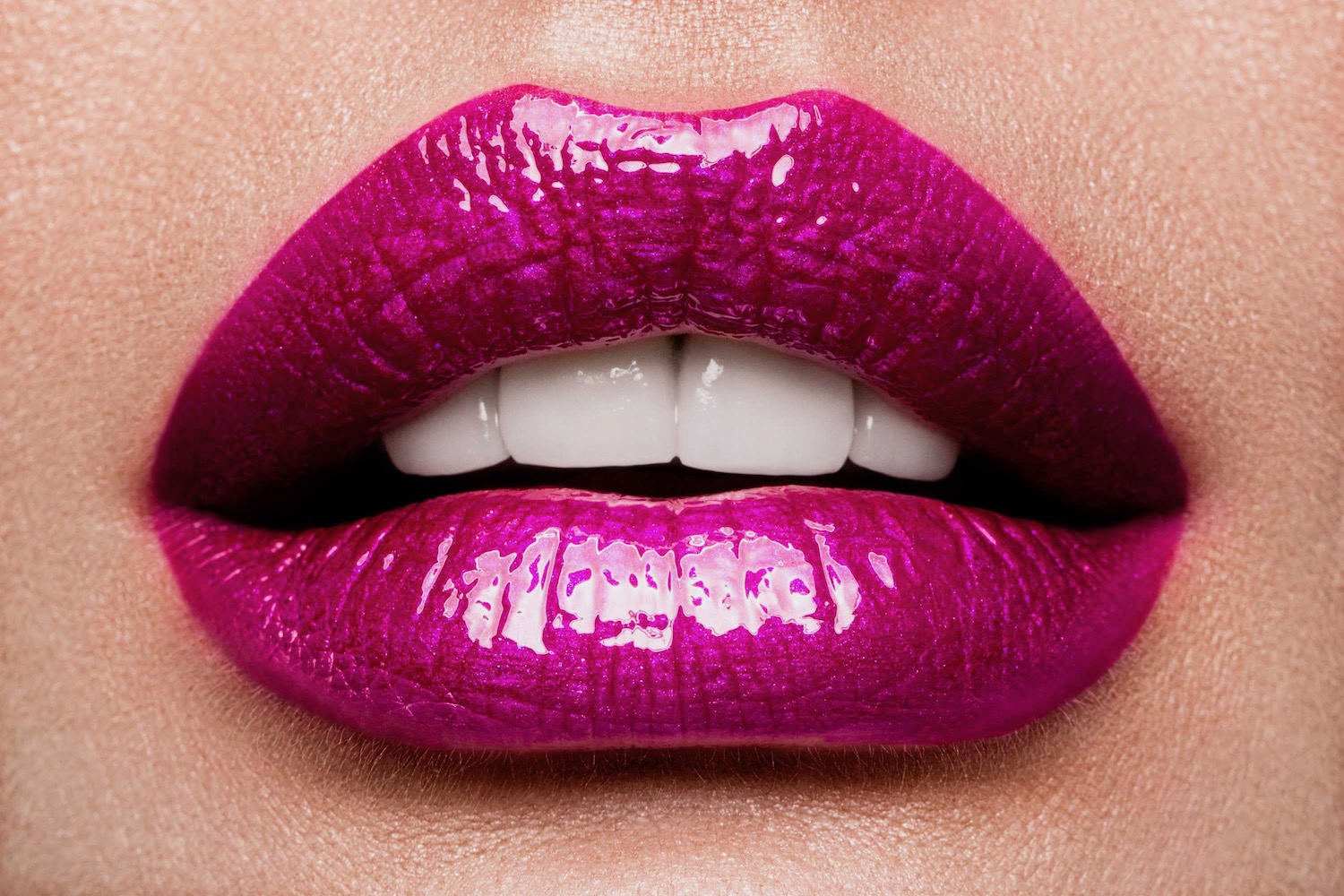
Which Lip Filler Lasts the Longest?
Introduction
You’ve found the perfect lipstick, but it doesn’t last long. You put on a new coat and within an hour or two, your lips are dry again. What to do? Maybe you need a better type of lip filler! There are different types of lip fillers that can give you more lasting results with the right application technique. This article will explore which type lasts the longest–temporary or permanent-and how to use them properly for maximum effect.
What Are Lip Fillers and What Do They Do?
Lip fillers are a cosmetic treatment that can be used to improve the appearance of the lips. Lip fillers are made of a variety of substances, including collagen, hyaluronic acid, and fat. They are injected into the lips to add volume and make them look fuller. The results of a lip filler treatment last for about six months.
Differences Between Temporary and Permanent Lip Fillers
There are two types of lip fillers: temporary and permanent. Temporary fillers are made of hyaluronic acid, which is a substance that is found naturally in the body. The advantage of temporary fillers is that they are reversible–they can be dissolved with an injection of hyaluronidase.
Permanent fillers are made of a synthetic material, such as silicone, and cannot be reversed.
How to Use Lip Fillers Properly
When you get lip fillers, the doctor will inject them into your lips. They will then use a blunt needle to spread them evenly throughout your lips. You should avoid smoking and drinking alcohol for 24 hours after getting your lip fillers.
You should also avoid eating anything that might stain your lips for the first 12 hours after getting your fillers. This includes foods like curry, beetroot, and blueberries. You should also avoid excessive sun exposure.
Side Effects of Using Lip Fillers Incorrectly
Side effects of using lip fillers incorrectly are not always easy to detect. Some side effects include temporary dryness, swelling, and heightening sensitivity to the mouth’s tissues. If you’re experiencing any of these symptoms, it is advised that you go to a doctor as soon as possible.
Why Type of Filler Lasts the Longest?
Temporary fillers usually last for about six months, while permanent fillers can last for years. Temporary fillers are a good option for people who want to try out lip fillers before getting a permanent filler. They are also a good option for people who are not sure if they want to get a permanent filler.
Permanent fillers are a good option for people who want long-lasting results.
Which Types of People Should Avoid Using Lip Fillers?
Lip fillers shouldn’t be used by people with allergies to lip fillers, smokers, or people who have been told not to apply any types of makeup or other aesthetic products with potentially dangerous chemicals. If you have any other health conditions or thyroid problems, consult with a physician first before getting a lip filler.
How Much Does it Cost to Get a Lip Filler Treatment?
Getting a lip filler treatment done at home is much cheaper than getting one done at the doctor’s office. The average cost of a lip filler treatment is around $500, but the cost can vary depending on the type of filler used and the size of the area being treated.
If you’re looking to save money, getting a lip filler treatment done at home is a good option. However, it’s important to note that you should only use high-quality fillers and always consult with a doctor before starting any new treatments.
Conclusion
Lip fillers are a good option for people who want to add volume and definition to their lips or make them look fuller. They come in two different types: temporary and permanent. These products last for about six months before they need to be reapplied.
Always consult with your physician before starting any new treatments.

How Long Does Hyaluron Lip Filler Last?
Introduction
Hyaluronic acid is a glycosaminoglycan, which is a type of molecule that is found in the body. It is found in high concentrations in the skin and cartilage. Hyaluronic acid plays an important role in the body by helping to keep the skin hydrated and elastic. It also helps to lubricate joints.
There are a number of different ways to increase the levels of hyaluronic acid in the body. One way is to take supplements that contain hyaluronic acid. Another way is to get injections of hyaluronic acid. Hyaluron lip filler is a type of injection that is used to fill in lines and wrinkles around the lips.
Read on to learn more about the treatment, how much it costs, and how it could help you achieve your cosmetic goals!
What is Hyaluron Lip Filler?
Hyaluron lip filler is a substance that is injected into the lips to make them fuller. It is a natural substance that is found in the body. It is used to improve the appearance of the lips by making them fuller and more voluptuous.
Hyaluron lip filler is made from hyaluronic acid, which is a natural substance that is found in the body.
How Long Does it Last?
The results of Hyaluron lip filler treatment last for around six months. This will vary depending on the patient’s lifestyle and how their body reacts to the filler.
How Much Does it Cost to Get Lip Injections Done at a Plastic Surgeon’s Office?
The cost of lip injections will vary depending on the type of filler that is used. Generally, hyaluronic acid fillers such as Restylane, Juvederm, and Belotero are less expensive than collagen fillers.
The cost ranges from $1,000 – $2,000 per application at a plastic surgeon’s office or $150-200 per application with an independent injector who has been certified by the International Dermal Institute (IDI).
Benefits of Using Hyaluron Lip Filler
Hyaluron lip filler can be a more affordable alternative to cosmetic or surgical lip enhancement. It can also be used in cases where the use of implants, injections, and fillers have not been successful.
Hyaluron lip filler can effectively reduce the appearance of wrinkles around the mouth and chin area. In addition, this type of treatment is temporary, so there is no need to maintain a certain diet or lifestyle after undergoing it.
Risks
When considering any type of medical procedure, it’s important to be aware of the risks involved. With Hyaluron lip filler, some of the potential risks include allergic reactions, infection, and scarring. It’s important to consult with a doctor before getting any type of lip injections done in order to weigh the risks and benefits and make an informed decision.
Conclusion
The benefits of using Hyaluron lip filler are many. It’s a more affordable alternative to cosmetic or surgical lip enhancement, it can reduce the appearance of wrinkles around the mouth and chin area, it’s temporary so there is no need to maintain an expensive diet or lifestyle after undergoing it, and it offers some protection against sagging skin on the face.
However, like any type of medical procedure, there are risks associated with getting injections done, so you should weigh the pros and cons before making a decision regarding this treatment. We hope this article has helped answer your questions about Hyaluron lip filler!
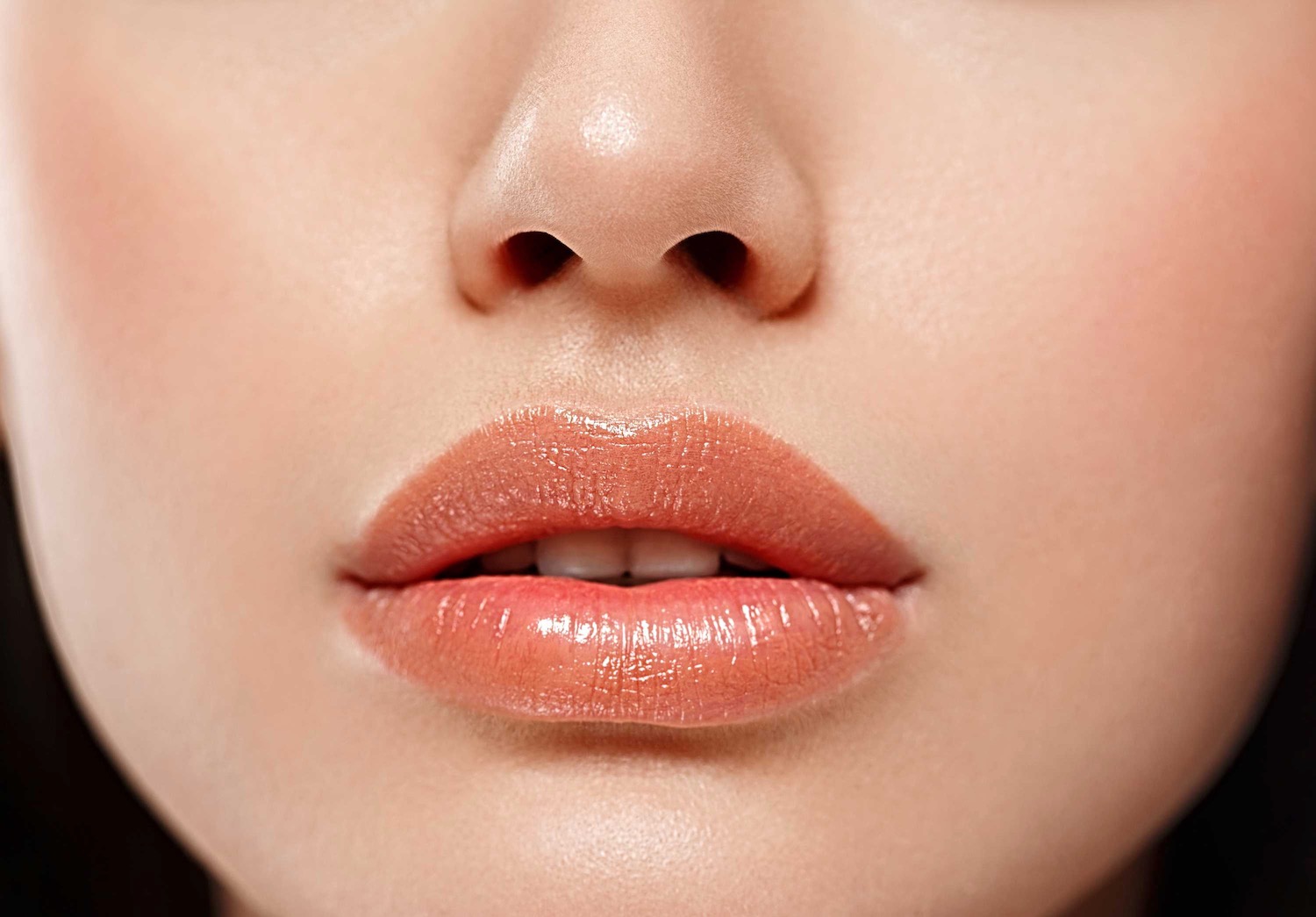
How to Plump Lips Without Botox
On many people’s faces, it’s their lips that garner the most attention from onlookers and admirers alike. It is widely thought that a person with thin lips lacks the attractiveness and sex appeal of someone with a thicker, poutier pucker. That is why many people choose to get Botox injections to make their lips look fuller.
This article will discuss different ways that you can plump your lips without getting Botox injections. First, there are temporary methods that use things like collagen or Restylane fillers, which help to give the appearance of fullness for a few months before wearing off and needing to be repeated. Second, there are more permanent methods such as lip implants, which last indefinitely but may require surgery.
Gaining Plumpness with Balms, Glosses, and Exercise
There are a number of ways to plump your lips without getting Botox injections. First, you can use a lip plumper. There are many types of lip plumpers on the market today, and they all work a little bit differently. Some work by increasing blood flow to the lips, while others work by adding collagen or other ingredients that help to plump the lips.
By using a natural lip gloss that is enriched with oils and nutrients, for example, you will keep your lips plump and feeling refreshed throughout the day. Methods like this one – although virtually risk-free – are also only temporary.
Another way to achieve temporary plumping for your pucker is to use a lip gloss that contains peppermint oil. Peppermint oil is known to cause a tingling sensation on the lips, which will temporarily make them look fuller. Just make sure not to overdo it, as too much peppermint oil can actually be harmful.
Yet another way to plump your lips without Botox or fillers is to use a collagen-infused lip gloss. This type of lip gloss will help promote collagen production in the skin, resulting in fuller-looking lips. Plus, the collagen will help keep your lips hydrated and looking healthy.
Another way to plump your lips without Botox is to use a lip liner. Lip liners can be used to make your lips look fuller and more defined. They can also be used to create a lip shape that you like better. You can use lip liner by itself, or apply it before you apply your favorite lipstick.
There are also some simple exercises that you can do at home without having to spend any money at all. One of these exercises is called the “fish lips” exercise. To do this, you simply purse your lips together and then use your fingers to open them up like a fish’s mouth. Do this 10 times per day and you should start to see results in a few weeks.
Another exercise is called the bee’s sting. To do this, suck your lower lip into your mouth and hold it there for 5 seconds before releasing. Repeat this 10 times per day and you should see an improvement in the fullness of your lips over time.
These exercises are not as effective as getting injections or surgery, but they are much cheaper and have no risks associated with them.
Other Solutions
For anyone who is serious about plumping up their lips without looking like they’ve had Botox injections, there are many long-lasting ways that will likely give you the results that you want.
The first solution involves using collagen, or Restylane, fillers that are injected into the lip area. These work by adding volume in that area, making the lips appear to be fuller. When these procedures wear off, after a few months you would have to get the procedure repeated to maintain the look.
Dermal fillers are perfect for those who are not interested in surgery. Dermal fillers are products that are injected into the skin in order to fill in wrinkles and lines. They can also be used to plump up the lips. Dermal fillers come in a variety of different formulas, so it’s important to find one that is right for you.
You could also consider getting laser liposuction. This procedure uses a laser to destroy the fat cells in the lips, resulting in a more contoured appearance. However, it is important to note that laser liposuction is a surgical procedure and comes with some risks.
Another, more-permanent solution is to get lip implants placed. Lip implants are exactly what they sound like: a surgical method that involves the implantation of a prosthetic lip enhancer so as to plump your lips. While some people are able to have their lip implants removed after they are no longer needed, others may find that this is not possible.
These implants are usually made from silicone or other materials that will not cause a reaction in your body. The main downside to this is that it is a surgical procedure and it is therefore costly and may have some risks associated with it.
These implants can be inserted in one of two different locations in the cheek – either in front of the ears or higher up near the temples. Cheek implants can give your cheeks a more defined shape, and can also help to plump your lips.
Seeking More Long-Lasting Results
In conclusion, there are a number of ways that you can plump your lips without having to get Botox injections. But no matter what method you choose, it’s important to remember also that these methods are only temporary fixes. If you want long-lasting results, you may want to consider getting Botox injections.
The best way to find out which one is right for you is to talk to your doctor or a professional who can help you make the decision. If you are looking for a more permanent solution, then getting surgery may be the best option for you.
However, if you are looking for something that is temporary and does not require any needles or surgery, then using fillers may be the best choice. And simple exercises at home may help to increase the fullness of your lips over time.
Whatever method you choose to achieve that envied, pouty pucker, just be sure to do your research and talk to a professional beforehand to make certain that you are making the best decision for your needs.
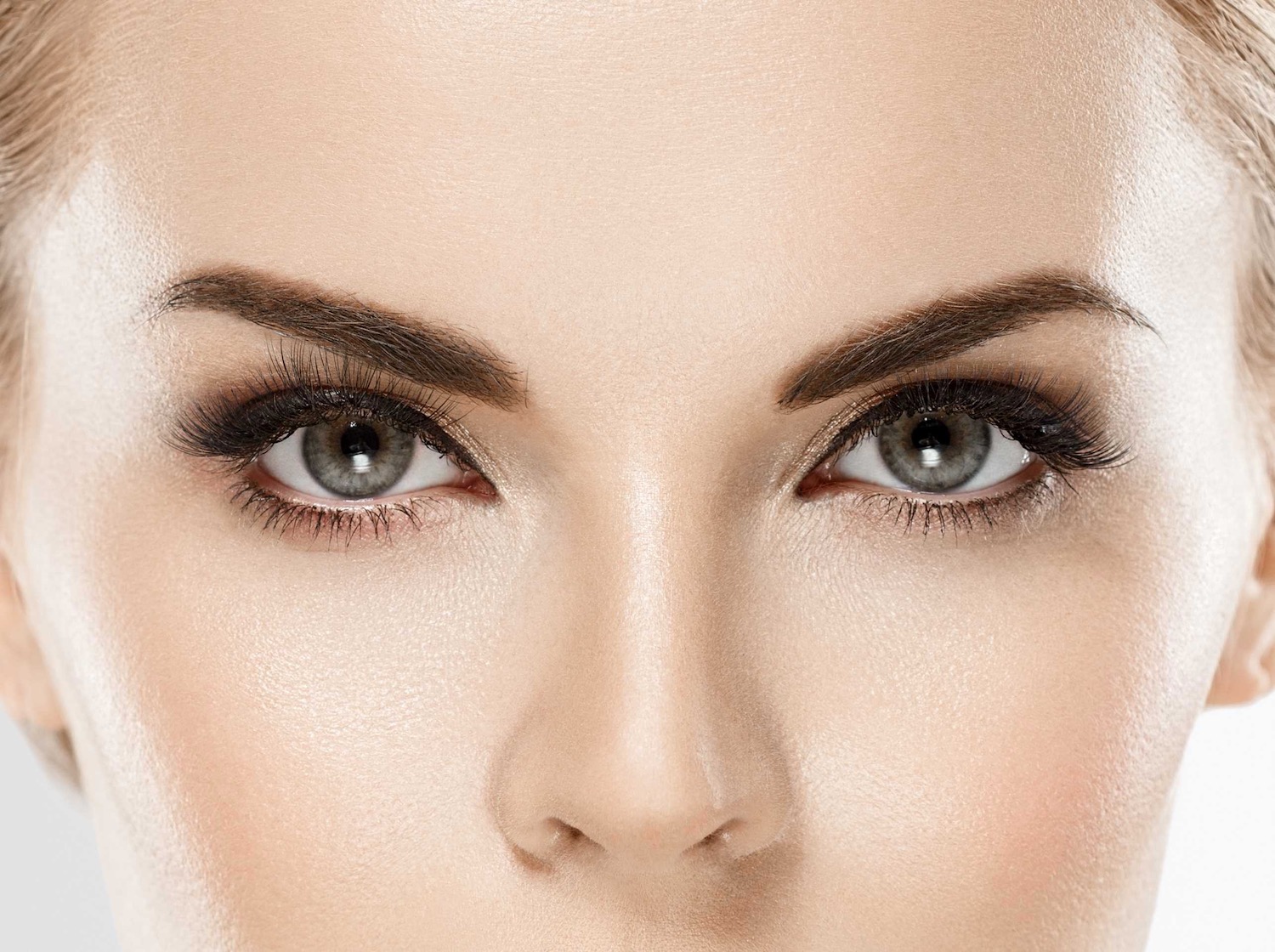
How to Lift Eyebrows with Botox
If you have thin, sagging eyebrows due to age or over-plucking, Botox (botulinum toxin) can help you get the brows back in shape. The procedure is quick and painless and will last a long time. You will need some touch-ups every 3-4 months, however, as the effects of the injections wear off over time.
This article will explain how to lift eyebrows with Botox, which is a nonsurgical cosmetic procedure that can be used to reduce the appearance of fine lines and wrinkles, such as crow’s feet around the eyes, horizontal forehead creases, and vertical frown lines between the brows.
During this treatment, a mixture of Botox is injected directly into muscles of the face to weaken them and reduce contraction over time. This will keep these muscles relaxed and therefore prevent face wrinkles from occurring or worsening, depending on your age and level of sun exposure.
It’s possible for you to get Botox in order to soften deep furrowing across the forehead or crow’s feet near your eyes; however, if you desire smoother skin, it is best to consult with your doctor about having Botox injections.
What to Expect with Botox Treatments
The effects of Botox can last up to 4-5 months, depending on the individual’s metabolism and how active their facial muscles are. As soon as your body starts producing more collagen, you can begin noticing improvements in your skin tone and texture.
When administered correctly by a trained professional, the risks involved with receiving Botox injections are minimal. However it should be noted that a few people have had allergic reactions to certain formulations of the product. If this does happen, you will have to seek out different options for treatment.
Although this treatment is most frequently used to minimize wrinkles and lines in many areas of the face, you will experience a faster recovery time if you only have injections in the forehead, crows feet around your eyes, and horizontal creases across your forehead.
If you would like to reduce expression lines on your neck or fine lines on your upper lip, then it’s recommended that you visit the dermatologist for a consultation – they may offer other treatments that can help with these issues.
On average, a set of Botox procedures costs between $350 and $750 per treatment area. The average fee for treating areas such as the crow’s feet near the eyes is lower than that of treating larger surfaces like the forehead because less product needs to be administered. The price of the injections may vary depending on your geographical location and provider.
Typically, you will start to notice changes within 3-5 days after treatment. However, some patients don’t feel comfortable with their appearance until 3-4 weeks after receiving treatments when they get used to the new way that they look. It’s possible for you to get Botox injected into your face anywhere between 6 months to one year apart from each other. This is considered safe because it allows your body enough time for collagen remodeling without disrupting any treatments.
If you have any concerns about getting a set of injections every 4-6 months, make sure you talk with a professional in order to find out if this is a suitable treatment option.
Timing is Everything with Repeat Treatments
It’s highly recommended that you wait at least one month to get botox injected into your face after surgery, as this allows your body to heal completely. Some physicians may offer the treatment sooner than this time period if it has been deemed safe by other reasons.
However, it’s vital that you never receive Botox injections if you recently had cosmetic or reconstructive surgery on any part of your face due to an increased risk of serious side effects. Also, it will take longer for the muscles to relax and therefore require more product to achieve desired results – which means a higher cost for the procedure. It’s best if you speak with a specialist about your individual situation.
The most common side effects associated with Botox injections are minor and generally dissipate within a few days. You may experience some temporary bruising, redness, or swelling at the injection site, but these typically resolve on their own. Rarely, you may experience more severe side effects such as difficulty breathing, chest pain, and drooping eyelids. If you experience any of these symptoms, make sure to seek medical attention immediately.
There are some people who should avoid getting Botox injections altogether. If you are pregnant or breastfeeding, then you should not receive any Botox injections as this can be fatal to your baby. You should also not get Botox injections if you are allergic to botulinum toxin, have an infection at the planned injection site, or have myasthenia gravis.
Reaping the Benefits of Botox
There are many benefits associated with receiving a set of Botox injections. By paralyzing target muscles, it can help minimize wrinkles and fine lines for up to four months depending on the area being treated. Not only does it help reduce wrinkling but it can also improve your appearance by softening certain facial features that may appear irregular due to tension in your muscles. Some people say that they feel more confident after getting Botox injected into their face and this also increases their self esteem.
Most people consider Botox injections to be a very safe procedure, but you must keep in mind that Botox is not a permanent solution; results will fade over time. Typically, results will last for three to six months, but this varies depending on the area treated. You may need to repeat treatments every three to six months in order to keep wrinkles and fine lines minimized.
Unfortunately, Botox is not covered by medical insurance. However, if you have a flexible spending account, you may be able to use that money towards the cost of your treatments. Additionally, some healthcare providers offer financing plans which can help make this procedure more affordable for you without having to pay upfront.
This type of financing is typically interest free so it’s an excellent option if you do not have the financial resources available right away. It’s best to speak with your healthcare provider about what options are available for payment so that you can find what works best for your individual needs and budget constraints.
You can receive Botox from a very young age. In fact, many teens have been getting this procedure done for years, but it is more commonly performed on adults who want to minimize fine lines and wrinkles. If you are a parent who would like your children to get Botox treatments, then consult with your child’s pediatrician before making any decisions. Keep in mind that most insurance companies will not cover the cost of Botox on your child if they are still growing as their facial features may change over time.
It is extremely important that you meet with a qualified healthcare provider before receiving any Botox injections from them. They should be able to assess your individual needs and discuss the different treatment options that are available to you. This consultation is an excellent opportunity for you to ask any questions that you may have about the procedure. Remember, it’s important to be well-informed before making any decisions about your health.
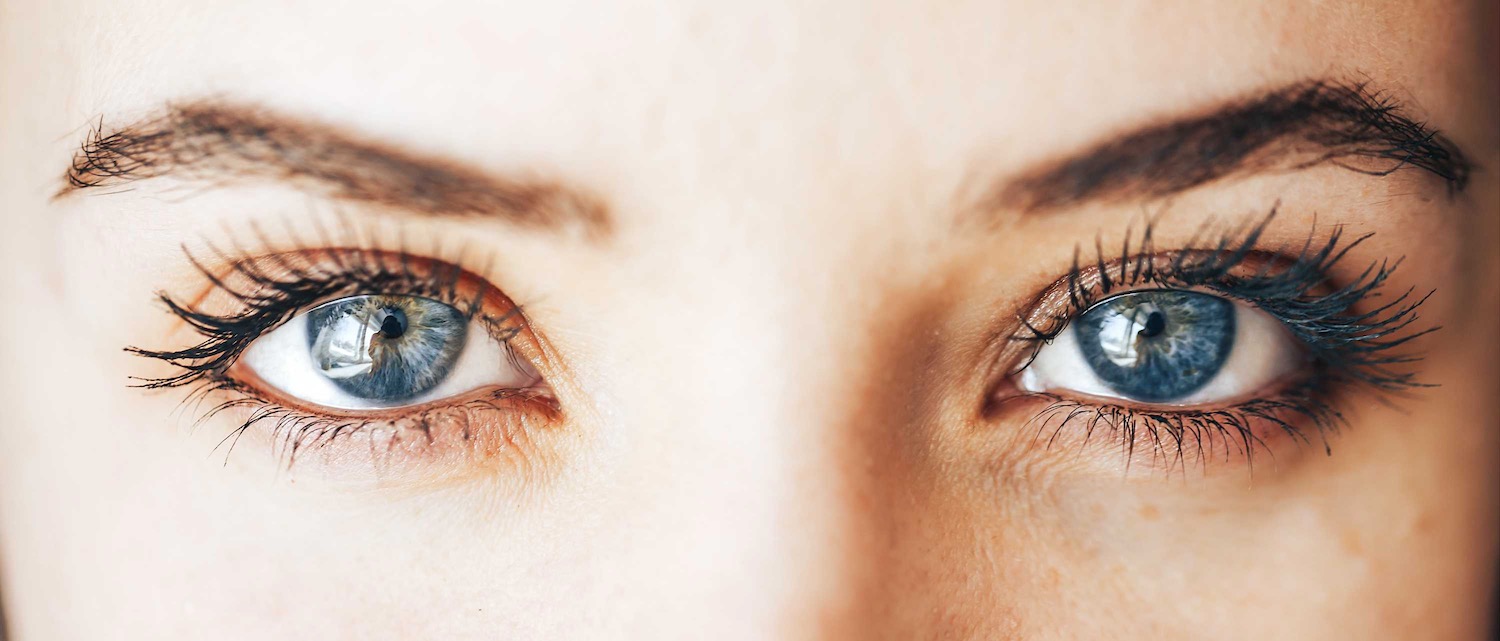
How Many Botox Units for Eyes?
The area around the eyes is one of the most popular for which patients seek out Botox treatments. Probably due to the fact that one’s age is reflected most in the lines and puffiness around the eye area.
But just how many Botox units are required to treat the eyes? The answer to that question depends largely on the area around the eyes that is being treated. Generally speaking, about 15-25 Botox units are needed to treat crow’s feet. Forehead lines, meanwhile, require about 10-20 Botox units. And lastly, frown lines – in the center of the forehead – need about 5-10 Botox units.
Most people need at least 10 units of Botox to achieve their desired results for the eyes. However, it’s important to remember that everyone is different. Your doctor is best to advise you on the appropriate amount of Botox units for you.
The number of units of Botox needed to treat under-eye bags is typically based on the severity of puffiness you are experiencing. For example, if your under-eye bags are mild, then you can expect to receive about 20 units per eye; however, if your under-eye bags are severe, you may need up to 40 units per eye. Most people require between three and five treatment sessions for this type of Botox treatment.
Treating crow’s feet through the injection of Botox into the forehead muscles – also known as a brow life – should be done using a 1:2 milligrams/unit ratio distributed equally in five injection points around each eye area (the brow lift will involve 15-30 injections). To treat crow’s feet through suborbicularis oculi injections, 1:2 milligrams/unit is injected into three injection points. For treatment of periorbital dark circles, as much as 5 milligrams may be used in a single session.
When used correctly, Botox can be one of the best defenses against the tell-tale signs of aging that take the form of lines and wrinkles around a person’s eyes. Therefore, it is imperative that your doctor properly assess your personal situation before prescribing an exact number units of Botox for treating the eye area. Doing so will help ensure the best results possible.
What to Expect with Eye Botox
Many people are fearful about getting Botox injections because they think of the procedure as painful and quite scary. However, the treatment is actually quite simple.
After receiving a local anesthetic to numb your skin, your doctor will use a very fine needle to inject tiny amounts of natural protein into specific areas in order to temporarily paralyze the muscles that cause wrinkles and lines on your face.
The process takes just minutes, and you can usually continue with moderate activities right after the procedure with little or no downtime at all. During the injection process, you can expect to feel some pain or discomfort, but most people find that this pain is tolerable. Lidocaine gel may be applied before giving an injection to help numb up the area around the eye.
Botox injections for the eyes are considered safe and effective treatments; however, as with any medical procedure, there is always a risk for side effects. Some people may experience dryness or irritation in their eyes after getting an injection. Others may develop temporary blurred vision. In rare cases, Botox injections for the eyes may cause more serious complications like vision loss, double vision, droopy eyelids, or severe eye infections.
Other possible side effects may include pain or discomfort during injections, unwanted changes in eyelash height or thickness, dry eyes due to Botox paralyzing the eye muscles, and a temporary decrease in your ability to sweat.
Following a Botox treatment, you can also expect to experience some redness, bruising, and mild swelling. These side effects should subside within three days of getting a treatment. If desired, you can use makeup to cover up any residual bruising, but apply any coverup creams or powders with caution as too much pressure on the treatment area can cause more bruising.
There is a recovery time of about two weeks needed after getting Botox injections for the eyes. During this time, you should avoid rubbing or massaging the treated area. You should also avoid strenuous activities, such as exercising or certain types of work. If you do experience any flu-like symptoms after getting an injection, such as a fever, nausea, or muscle aches, contact your doctor immediately.
In summary, generally speaking, most people need about 10 units of Botox to achieve their desired results for the eyes and it is a safe and effective treatment. The most common side effects are bruising around the injection site, temporary drooping of facial features, which typically lasts for two days, pain or discomfort during injections, unwanted changes in eyelash height or thickness, dry eyes due to Botox paralyzing the eye muscles, and a temporary decrease in your ability to sweat.
Botox injections for the eyes are a safe and effective way to reduce wrinkles and lines, and most people experience minimal side effects. If you’re interested in trying this treatment, consult with a qualified doctor to find out if it’s right for you. You may be surprised at how natural and youthful you look after just a few treatments!

What Lasts Longer: Botox or Dysport?
While Botox and Dysport are both used as weapons in the never-ending battle against wrinkles, there remain differences in the way each treatment works. For example, Both methods are powerful anti-wrinkle fighters, but which one lasts longer?
This article examines some of the basics of both treatments such as what lasts longer, Botox or Dysport and what youth-seekers should expect from both methods.
Botox is injected into specific muscles to stop them from creating the expression that causes wrinkles. Dysport, on the other hand, is injected into a wider area of muscles to relax them. The result is a smoother skin that lasts longer – up to a year with a single treatment.
Everyone worries about wrinkles as they age. Unfortunately, as we grow older, the muscles in our face begin to look fatigued and worn as fine lines form. We all know that Botox is a trendy way to help reduce the appearance of these lines. Fewer people know how Dysport works or why it can help with their anti-aging goals.
Botox vs. Dysport
Botox is an injectable drug that relaxes the muscles in the face to reduce wrinkles by paralyzing them. It has been used by millions worldwide for years now because it is a safe and effective way to smooth out those stubborn wrinkles.
When injected directly into specific muscles where wrinkles appear, Botox effectively “turns off” those facial expressions so that you can enjoy long-lasting results for up to a year with a single treatment.
On average, Botox injections last for about three to four months. That means you can go up to six months without having another injection if you don’t want too many lines on your forehead or around your eyes.
There are some drawbacks to Botox, especially when it comes to cost. It costs anywhere from $300-$600 per treatment depending on where you live and how much product is used during the procedure. And because it only lasts for a few months, you’ll have to get injections every four to six months to maintain the anti-wrinkle benefits.
Also, it takes about 10 days for Botox to take full effect, but you may notice smoother skin right away.
Like Botox, Dysport is also an injectable drug, but it works differently. Dysport is a neurotoxin that relaxes the muscles in your face, but it also temporarily freezes them. This means that the results of Dysport treatments last longer than Botox injections because the muscles are paralyzed for a longer period of time.
Dysport treatments usually last for about three to four months as well, but they cost less than Botox injections. You can usually find Dysport treatments for around $200-$300 per treatment. And like Botox, you’ll need to get treatments every four to six months for anti-aging benefits.
The cost and length of treatments means that both Botox and Dysport injections are effective ways to prevent wrinkles, but most people choose between these two options based on where they live.
Some doctors only use one drug over the other, so if you want to get an injection in your forehead or crow’s feet you might have to go through a few different procedures with different doctors.
There are some who say that they like the idea of not having any downtime after getting their injections done with Dysport whereas others prefer the instant gratification of seeing results from Botox right away.
Ultimately both products have pros and cons so it all comes down to what works best for you.

How Long Until You Can Sleep After Botox?
Many people want to know how long after Botox they can lie down to rest or sleep. It’s advised usually that you should avoid strenuous activity for a few hours following Botox treatments. You should also avoid lying down for the first four hours after receiving injections.
This is because if you lie down too soon, the toxin can move from the muscle to other parts of your body (such as your brain). This can cause problems like drooping eyelids, blurred vision, and decreased muscle strength.
It’s also important to take care of your injection sites. Do not rub them or put pressure on them. And avoid sun exposure, since it can make the bruises worse.
What is Botox and How Does it Work?
Botox is a neurotoxin that is injected into the muscles to help reduce the appearance of wrinkles. It works by blocking the release of a chemical called acetylcholine, which sends a message to the muscle telling it to contract. When you can’t release this chemical, the muscle stays relaxed and the wrinkle smooths out.
Botox is made from a toxin produced by the bacterium Clostridium botulinum. When used in small doses, it can be injected into muscles to block nerve signals and reduce muscle spasms.
Botox has been used for more than 25 years to treat a variety of medical conditions, including eye twitches, crossed eyes, and chronic migraines. It’s also been used to improve the appearance of wrinkles.
The US Food and Drug Administration first approved Botox for cosmetic use in 2002. Since then, it has become one of the most popular anti-aging treatments.
Post-Botox Care
So, let’s talk about what happens if you lie down to rest or sleep right after getting Botox injections. When you are upright, gravity helps keep the fluid in your face moving down so it doesn’t accumulate and cause swelling. When you lay down, however, the fluid has a chance to pool in your face and cause some minor swelling, which should go away within a few hours.
If you do experience some swelling, you can help reduce it by using a cold compress. You can also drink plenty of water to keep yourself hydrated.
To help the Botox take effect, you should avoid strenuous activity for a few hours. If you have multiple locations injected, it’s important to wait at least 24 hours before laying down after your second injection and then another 24 hours after the third injection.
It’s important to avoid rubbing the injection site, since this could lead to skin damage. You should also avoid putting pressure on the area, such as by leaning on a table. This can decrease blood flow and cause bruising.
If you get Botox in your forehead or between your eyebrows, you should be especially careful when washing your face. Your doctor may recommend using a gentle soap or unscented lotion on the injection sites. They may also recommend avoiding alcohol-based cleansers and toners because they can irritate the skin and cause more bruising.
You should take care of any bruises that form from having injections by applying a cold compress for ten minutes every hour or so throughout the day. The compresses will help inflammation and ease some of the pain.
Finally, you should resume your normal activities as soon as possible. But don’t worry if you have to take it easy for a day or two after getting Botox.
Final Advice on Sleeping After Botox
After getting the injection, you will want to make sure not to touch the area for a few hours so you don’t spread any of the toxin. While waiting, it is fine to lay down or sleep as long as your head remains propped up slightly higher than your heart. If possible, use an extra pillow under your head while sleeping on your back.
When Botox is injected into muscles, it blocks nerve impulses from reaching those muscles which stops the muscle spasms temporarily. While this may help relax muscles, laying down to sleep with an uneven surface under your face for extended periods of time puts pressure on optimally relaxed muscles and forces others that weren’t treated with the Botox to work harder which can lead to an uneven appearance.
If you are a relatively healthy person without any medical conditions, then laying down to sleep is usually okay 3-4 hours after your injections. Just be mindful of how you’re feeling and if you have any unusual side effects like excessive bruising or swelling, then give your doctor a call.
If you’re planning on getting Botox, make sure to have a day free from strenuous activity so you can relax and let the Botox work and enjoy your newly relaxed muscles while you take it easy for a few days.

How Long After Botox Can I Exercise?
Botox is a drug that’s injected into muscles and used to temporarily paralyze them. The idea behind Botox is that by weakening the muscle and letting it rest, it can heal more quickly.
The positive benefits of Botox treatments are their ability to reduce the appearance of lines and wrinkles. Many people look at this positive side effect as a benefit for themselves, especially if they are exercising to improve their body’s overall appearance. But how long after Botox can you exercise?
It is not uncommon for people to think the negative side effects outweigh this benefit and for this reason many people either stop exercising altogether or delay the Botox injections until they are finished with their fitness goals.
Botox injections are not addictive or harmful in any way, so they’re safe if you take care of yourself after receiving a treatment. There is no specific timeframe for when someone can resume exercising after receiving Botox injections. When an individual can return to the gym for physical activity depends largely on the patient’s tolerance to the treatment as well as the amount of Botox injections that were administered.
It is important to remember also that the length of time it takes for Botox to take effect can vary from person to person. If you are someone who responds quickly to treatments, you may be able to resume exercising after only a few days following your Botox injections. The best way to find out how you might respond to treatment and when to safely resume physical activity is by talking with your doctor and following their guidance.
What Botox Is and When it Works
Botox will not immediately stop muscle movement, only muscle contraction. Botox works by blocking the nerve impulses in your muscles, so any muscle contractions – such as those needed to exercise – will be initially limited. This means you won’t feel any pain and can continue with whatever activity you were doing without any negative side effects. It’s only when the product begins to wear off that you might experience pain from any muscle contractions.
The length of time it takes for Botox injections to take effect can vary from person to person. For some people, it only takes a few days for Botox injections to take effect and they can then resume exercising without any limitations or fear of side effects. However, it is more common for the effects of Botox to take a week or two before you can exercise without fear of any negative side effects from the product.
After you receive Botox injections, it can take anywhere from two weeks to four months for the effects to kick in. Once they do, you should have about three or four months of wrinkle-free skin before the Botox wears off.
Botox is not meant to be a permanent solution – its effects last only three to six months at a time – so you will have to seek out additional rounds of injections if you wish to maintain your smooth facial appearance.
Returning to Your Exercise Routine
After receiving Botox injections, it is common for people to experience some temporary muscle weakness, which can make exercising potentially dangerous.
The recovery time for Botox injections can depend on many things such as how much product was received and each individual’s tolerance to it. Most people will feel painless numbness in the areas where they had injections; this can last anywhere from 6 hours to 3 days after the injection.
As an example, a person with a high tolerance for Botox may choose to have more injections than someone else, which will require a longer period of time before they can exercise. In addition, if a person is getting Botox injected into their muscles (instead of into the lines on the face) then it may take longer for the product to wear off.
The healing process of the muscles in your face generally takes about one week to 10 days, although some people can recover more quickly than others. After receiving Botox injections, most people will be able to go back to their normal life the day of the appointment or the day after.
However, when you are ready to start exercising again, make sure that you ease yourself back into it slowly. Don’t try to hit the gym as hard as you did before – stick with lighter weights and slower routines until the area has had time to fully recover.
If you take care of yourself after your Botox injections, you can continue to exercise regularly without any trouble.
When receiving Botox injections, it is important to talk with your doctor about any concerns you might have about the time you will need to fully heal before returning to your usual exercise regimen. You should also respect their advice and realize that they are professionals and if they feel like you should wait longer or not start working out again at all, then that is their recommendation for your own safety.

How Many Units of Botox for Jaw Clenching?
Excessive and chronic jaw-clenching while asleep – medically known as bruxism – is a disorder that affects more than four million Americans and can cause everything from headaches to sore teeth. And it’s quite easy to see why the condition is so common: stress, anxiety, depression, and even chewing gum can contribute to its development.
Fortunately, there are many preventative measures and treatments available for those suffering with this problem. These range from the simple, such as lifestyle adjustments, to the more invasive, such as Botox injections.
This article will discuss the use of Botox injections to treat bruxism as well as some simple ways to prevent this condition from happening in the first place.
Using Botox to Treat Bruxism
Those who suffer from bruxism may be unaware of the habit, but they will often wake up with headache and neck pain due to the strain on these areas. Bruxism can also worsen other oral conditions, such as gum disease and tooth decay by loosening plaque deposits that accumulate around teeth.
One option for treating bruxism is Botox injections into the jaw muscles. The drug works by blocking nerve impulses to these muscles, causing them to relax. This also reduces the amount of effort placed on the temporomandibular joint (TMJ), which can become damaged if teeth are clenched excessively during sleep.
While doctors will use as many as 40 units of Botox in total, patients receiving these treatments often require less than 10 units per session.
The treatment procedure begins with anesthetizing either inside or outside of the mouth using topical anesthesia gel. Next, small needles are inserted into specific points along the jawline where large amounts of muscle mass reside that contribute to clenching and grinding behaviors while sleeping.
After the injections are administered, the patient is usually asked to keep their mouth open for several minutes so that the drug can spread evenly. Bruxism treatments using Botox injections typically last between 3 and 4 months.
Ways to Prevent Bruxism
Do you wake up with a headache, or after a long day are your jaws feeling sore? If so, you may have bruxism. Unfortunately there is no cure for this disorder, but there are multiple treatments available that range from lifestyle changes to medication.
In order to prevent this condition, patients should first try wearing a suitable mouth guard at night to protect against grinding their teeth together during sleep. In addition, there are over-the-counter drugs available that help relax jaw muscles without causing drowsiness.
These treatments usually work for mild cases of bruxism but if symptoms persist following treatment, dental surgery may be necessary for more severe cases.
Here are some simple suggestions that could possibly prevent brusqueness in the first place:
- Wear a night guard. A night guard covers your teeth while sleeping and uses soft plastic or rubber materials to cushion against your upper teeth during sleep.
- Loosen up your chewing habits. Whenever you chew gum, focus on gently biting down rather than clenching. This will help prevent the build up of excessive force from occurring within your jaw muscles and lead to a decreased risk of bruxism.
- Get a massage. Doing so can relax your face and prepare your mind for sleep by focusing it elsewhere besides any problem areas that may be causing you discomfort or pain at night.
- See a doctor about medication. There are several prescription medicines that can reduce the effects of bruxism such as antidepressants, muscle relaxers, and sedatives. With so many options available, there is no reason why you should suffer from chronic teeth grinding.
The causes of bruxism are widespread in today’s world: stress, anxiety, or not enough sleep. The use of Botox injections to treat bruxism is increasing because it’s an effective treatment that has few if any side effects.
